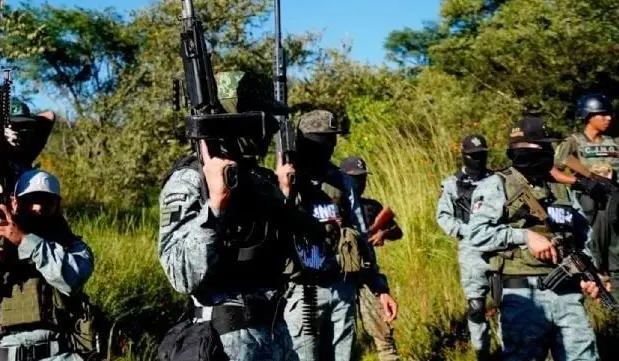The split between the factions of Ismael el Mayo Zambada and Los Chapitos in the Sinaloa Cartel will generate a very deep rearrangement between the criminal groups in Michoacán, according to a diagnosis by the Human Security Observatory of the Apatzingán Region (OSHRA).
The organization warns that to confront the insecurity and violence of organized crime it is necessary to stop seeing this entity only as a scene of local conflicts between small groups and begin to perceive it as a territory in dispute of larger criminal entities, where the Jalisco Nueva Generación Cartel (CJNG) is becoming increasingly important.
Under current conditions, the organization predicts as a consequence of the above, an eventual alliance between the CJNG and the members of the so-called Chapiza against the Mayiza, among the most significant movements.
Dedicated since 2018 to the study of indicators of security, violence, poverty and human rights, among others, in the Tierra Caliente region, the OSHRA was founded as a citizen initiative of the academic group of the Human Security Agenda of Apatzingán, the Institute for the Promotion of Development of Apatzingán and the Security and Justice Roundtable of Apatzingán.
Through an analysis carried out for Proceso, the organization explains the dynamics of criminal groups in recent years in the state:
“The CJNG has a great ability to form alliances for its own interests; when they began to enter Michoacán in 2019-2020, the United Cartels were formed, with small groups that were organized to confront the Jalisco group. But with the passage of time and after certain periods of tense calm, an alignment of those who previously resisted and are now their allies has been noted, such as the case of Los Viagras, in an evident union against the Knights Templar.”
In this logic, he adds, it would be likely that the CJNG would adopt the Chapitos, because they “will not be able to do it alone and need to have a decisive support point against the Mayos, who in recent years have controlled the exit and transfer of drugs from Michoacán to the border.”
Also, given the fact that the leader of the CJNG, Nemesio Oseguera Cervantes el Mencho is originally from Aguililla, “it is no coincidence that this municipality is currently the beachhead of this criminal group for all the operations it is carrying out in Tierra Caliente.”
After locating the municipalities of Coahuayana, Aquila and Zamora-Jacona as entry points for the CJNG to Michoacán, where forced displacements of people have occurred, the Observatory reports that from Aguililla this cartel began to arrange and negotiate with other criminal groups, on the route to Buenavista and Apatzingán.
According to data from the Executive Secretariat of the National Public Security System, in the first three years of the government of Morena member Alfredo Ramírez Bedolla, which ended on September 30, there were 6,199 murders in Michoacán, more than 50% more than in the entire six-year term of his predecessor, Silvano Aureoles Conejo, when 11,461 were recorded.
The current president has boasted that during his administration the homicide figures have been on a downward trend, with a 36% reduction from 2021 to 2023 – going from 2,762 cases per year to 1,773. But he does not say that the disappearance of people and the location of lifeless bodies has grown 200% in the same period, from 304 to 920 cases per year.
Regarding the Security Strategy for the First 100 Days of Claudia Sheinbaum’s government, which initially offers to address extortion in the lemon production cycle in Michoacán, OSHRA considers the approach to shielding that sector to be “limited,” since “a series of historical structural elements are being left aside that, as long as they are not addressed, will hardly change the state of things.”
Source: proceso




